May 21, 2025 | 05:22 GMT +7
May 21, 2025 | 05:22 GMT +7
Hotline: 0913.378.918
May 21, 2025 | 05:22 GMT +7
Hotline: 0913.378.918
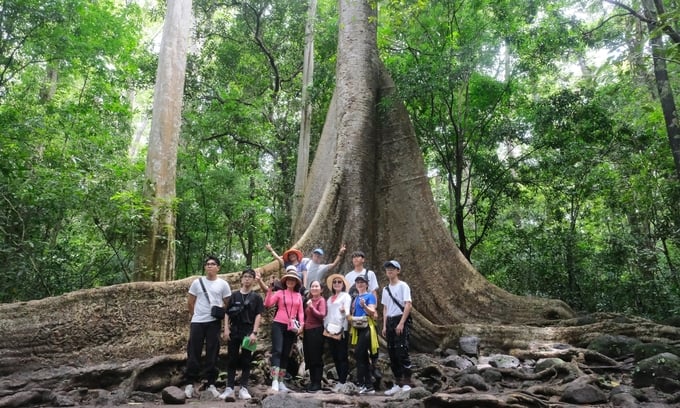
Tourists take pictures next to a giant tree at Cat Tien National Park. Photo: Bao Thang.
July is the middle of the rainy season in Southern Vietnam. We try bathing in the rain at Cat Tien National Park, though it would be better to experience the park in the dry season. As Garden Manager Pham Xuan Thinh advertised, each memory is remarkable in its own way. So everyone in the group is excited to go without any further questions.
Cat Tien has this wild side of beauty in the rainy season. The broad-leaved evergreen forest is layered. Oil, red oak, and incense trees reach tens of meters high as if they try to pierce through the clouds, poking straight into the sky. On higher levels, langurs lightly pass through branches, look down at the forest floor and watch groups of tourists leisurely exploring Bau Sau and Bau Chim. Bamboo trees grow high; their stems intersect into a large umbrella. Under that umbrella, an explorer can survive the sudden jungle rain with only a light raincoat.
From the administrative and service center of Cat Tien National Park to Bau Sau - the main tourist attraction - is about 14 kilometers, of which the first 9 kilometers is on a vehicle. The last 5 kilometers require explorers to trek through the forest on a unique trail. The forest floor gradually changed from light to dark shades; some spots were entirely dark because of the exuberant foliage in the sky.
The initial enjoyment gradually gives way to fear as we approach the forest’s core, disconnecting from the outside world. No phone signal, no shops or services. The chatter of laughter when we first entered the trail is also gone. Surrounding us are noises of footsteps rustling on the leaves; above us are gibbons howling and birds singing.
I took a deep, reassuring breath and looked at a young man beside me. The sweat is all over his forehead, but instead of being droplets, it creates a misty veil around his hair. His glasses were also blurred from the moisture. Seemingly, a layer of snow covers his every movement.
Someone notices first, then the whole group bursts out laughing at that discovery. The laughter becomes louder as each person realizes he is covered in a natural airy layer. Everyone is indulged in nature. Previously, the crew has felt unease because of the high humidity in the forest, trapping the sweat under our shirts. But suddenly, the anxiety is replaced by a feeling of refreshment.

The hyacinth plant, with its body bulging like a giant water hyacinth, is located on the road from the center of Cat Tien National Park to the Bau Sau area. Photo: Tung Dinh.
The concept of “forest bathing” originated in Japan but has become familiar to most Vietnamese, especially young people. Forest bathing means immersing in the atmosphere of the forest. Many scientists consider it a natural healing therapy, helping people improve physical and mental health while also preventing depression, loss of concentration and pain.
Some common forms of physical therapy are walking or cycling in the forest, which helps reduce blood pressure and the hormone cortisol (stress). Those without the necessary physical strength to perform these activities can go into the forest and leave their phones aside. A deep breath will extend the lung and help one immerse in the scenery between heaven and earth, feeling the soft green moss on rocks and rough tree trunks.
The hustling city life may have paused on the banks of the Dong Nai River. In Cat Tien National Park, one is enchanted by shimmering water streams, chirping birds, and the vast landscape comprising 1,600 plants. This ecosystem draws trekkers into another realm between rocky paths and green foliage.
On that trekking route, many treasures reveal themselves, such as the 300-year-old tree with massive roots higher than a human adult. This tree is famously known as the “thunder lizard” of Cat Tien forest. There is also a 700-year-old bronze wood tree.
Around noon, we arrive at Bau Sau. In front of your eyes is a 2,000-ha lagoon surrounded by green vegetation. The place is strangely quiet. Closing my eyes, I can only hear the sound of the wind whistling through the leaves.
The quiet atmosphere is interrupted by the sound of water motion from grass fields at a distance. Two-meter-long freshwater crocodiles slowly emerge to enjoy the fresh and clean air. In another place, water hyacinths bloom purple; cranes and pelicans look for fish to eat.
The Bau Sau landscape almost contrasts with the previous experience in Cat Tien National Park. The magnificent forest is replaced by a vast and majestic scenery of the characteristic Vietnam wetlands.
Because there is no power line, all electricity in Bau Sau is solar energy. The limited energy is just enough for simple lighting, a refrigerator, and small devices like phones. In case of urgency, the Bau Sau Ranger Station offers a spot called the “love window.” This spot is a "brick" phone with enough signal to communicate with the outside world.
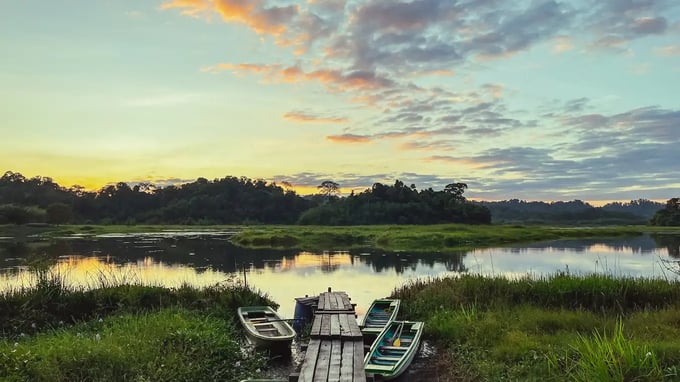
Bau Sau is most beautiful at sunset. Photo: Tung Dinh.
Linh, an officer at the Bau Sau Ranger Station, has prepared simple dishes like grilled pork belly, braised eggs, fried fish, and sauced tofu. Linh speaks with tourists about the work of forest rangers and their duty to protect the ecology. Laughter and chatter fill the ranger station.
“Because crocodiles are protected and grow well, they eat all the fish in the basket. We rarely have any fish to eat,” the ranger says gleefully.
At night, by pointing a flashlight towards the lake, one can see the red crocodile eyes glistening in the light. These eyes create a reverse constellation of stars on the lake’s surface. They also creep tourists away from getting too close to the lake.
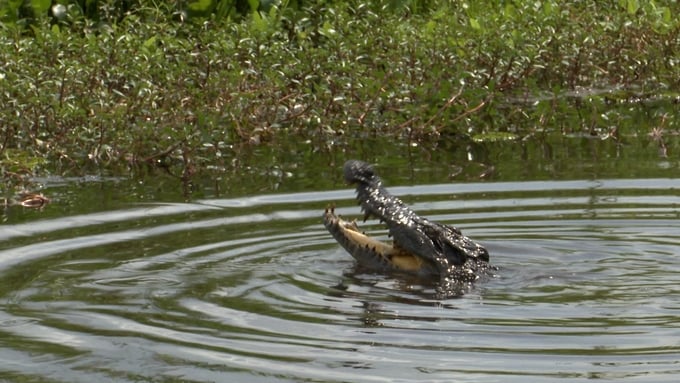
Crocodile in Bau Sau.
Without electricity and convenience, the night in Bau Sau passes peacefully. After a long slumber, we are awakened by a symphony of gibbons, birds, and crocodiles in the lake. This sound can be considered precious in today’s fast-paced life.
Above the waters, a layer of mist covers the scenery. Up in the sky, light rays shine through the roof of the ranger station. Further away, the green trees, flowers, mountains, and forests appear full of life in the sunlight.
As we leave Bau Sau, we still recall ranger Linh’s joke about Cat Tien forest: “The explorer’s half-smile takes a lifetime to forget.”
Director of the Center for Ecotourism and Environmental Education Tran Van Binh states that Cat Tien National Park organizes about 20 tours. The organizers pay special attention to ecosystem preservation and responsible tourism. In Vietnam, this way of touring is taking shape via ecotourism, discovery tourism, and wildlife observation tourism.
Translated by Quynh Chi
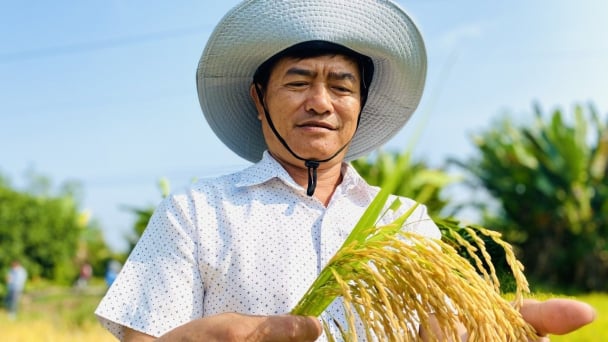
(VAN) Dong Thap farmers attained an average profit margin of 64% during the summer-autumn 2024 crop (first season), while An Giang and Kien Giang farmers followed with 56% and 54%, respectively.
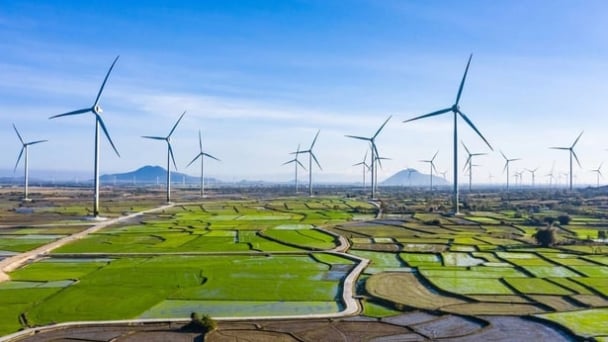
(VAN) As a doctoral student doing research on renewable energy and electrification at Harvard University, the author shares his musings on electricity, nature, and countryside memories.

(VAN) The decree on Extended Producer Responsibility (EPR) ensures transparent management and disbursement of support funds, avoiding the creation of a “give-and-take” mechanism.
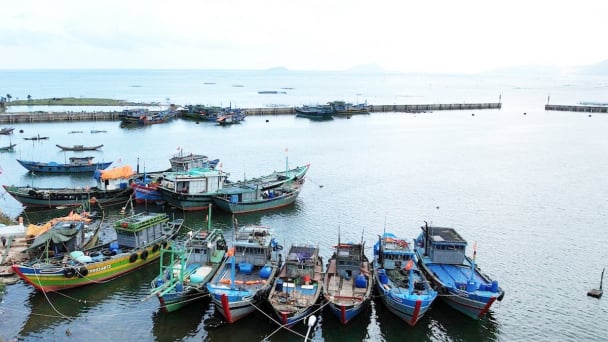
(VAN) Hue City rigorously enforces regulations regarding marine fishing and resource exploitation, with a particular emphasis on the monitoring of fishing vessels to prevent illegal, unreported, and unregulated (IUU) fishing.
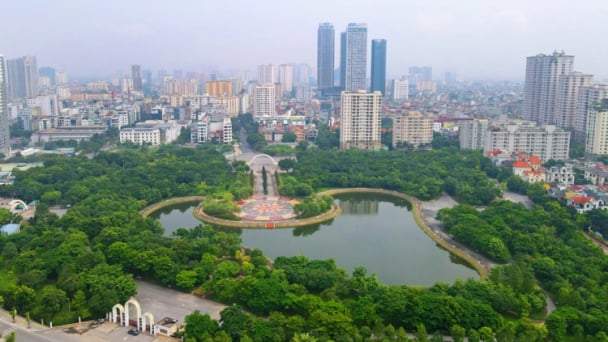
(VAN) Hanoi People's Committee has issued a plan on reducing greenhouse gas emissions in the waste management sector with 2030 vision.
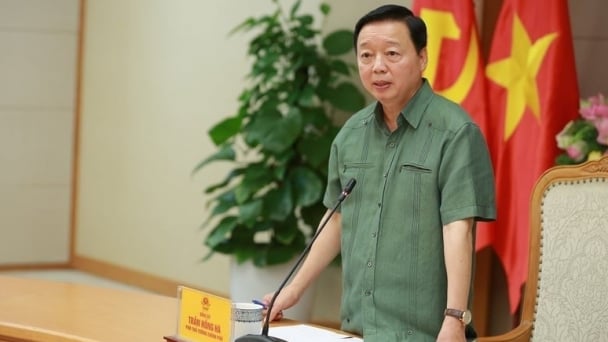
(VAN) Vietnam's draft amendment to Decree No. 156 proposes a mechanism for medicinal herb farming under forest canopies, linking economic development to population retention and the sustainable protection and development of forests.
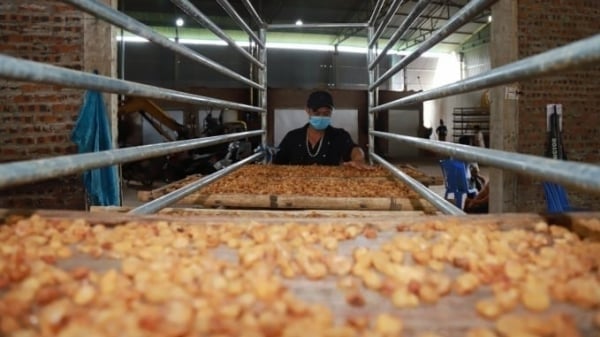
(VAN) In reality, many craft village models combined with tourism in Son La have proven effective, bringing significant economic benefits to rural communities.